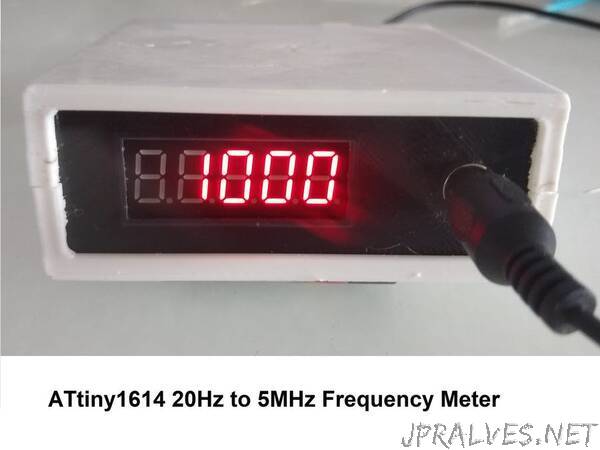
“A tiny frequency meter built using the ATtiny1614 microprocessor.
Over the years, I have build a number of audio oscillator circuits using discreet components (no microprocessors). While these produce good quality sine waves, the frequency of the output is usually set by a simple marked-up dial. In audio work, precise frequency control isn’t really required. Some more advanced oscillators showed the frequency on a meter but these are bulky solutions. All I really required was a small 5-Digit frequency meter preferably no bigger than the display itself so it took up as little room as possible.
Looking at different frequency meters on the eBay etc, I had mixed results with both their accuracy and what type of waveform they can reliably measure.
While all of them will perform as advertised provided you feed them a clean square wave, they start to show their limitations when feed other waveforms or when the signal is noisy or low in amplitude. This is due to the amplifier / buffer / wave shaping analog circuitry that feeds the microprocessor.
Building a frequency meter
My requirement was to have a 5-digit frequency meter (20Hz - 20kHz) on as small as possible board. The ATtiny1614 microprocessor is a cheap 14 pin SOIC chip with 16K Flash and 2K RAM running at up-to 20MHz. A 5 Digit 7-Segment display is driven by a MAX7219 driver chip. Also I added the input stage from DIY Simple Frequency Meter Up to 6.5MHz by Mirko Pavleski.”
